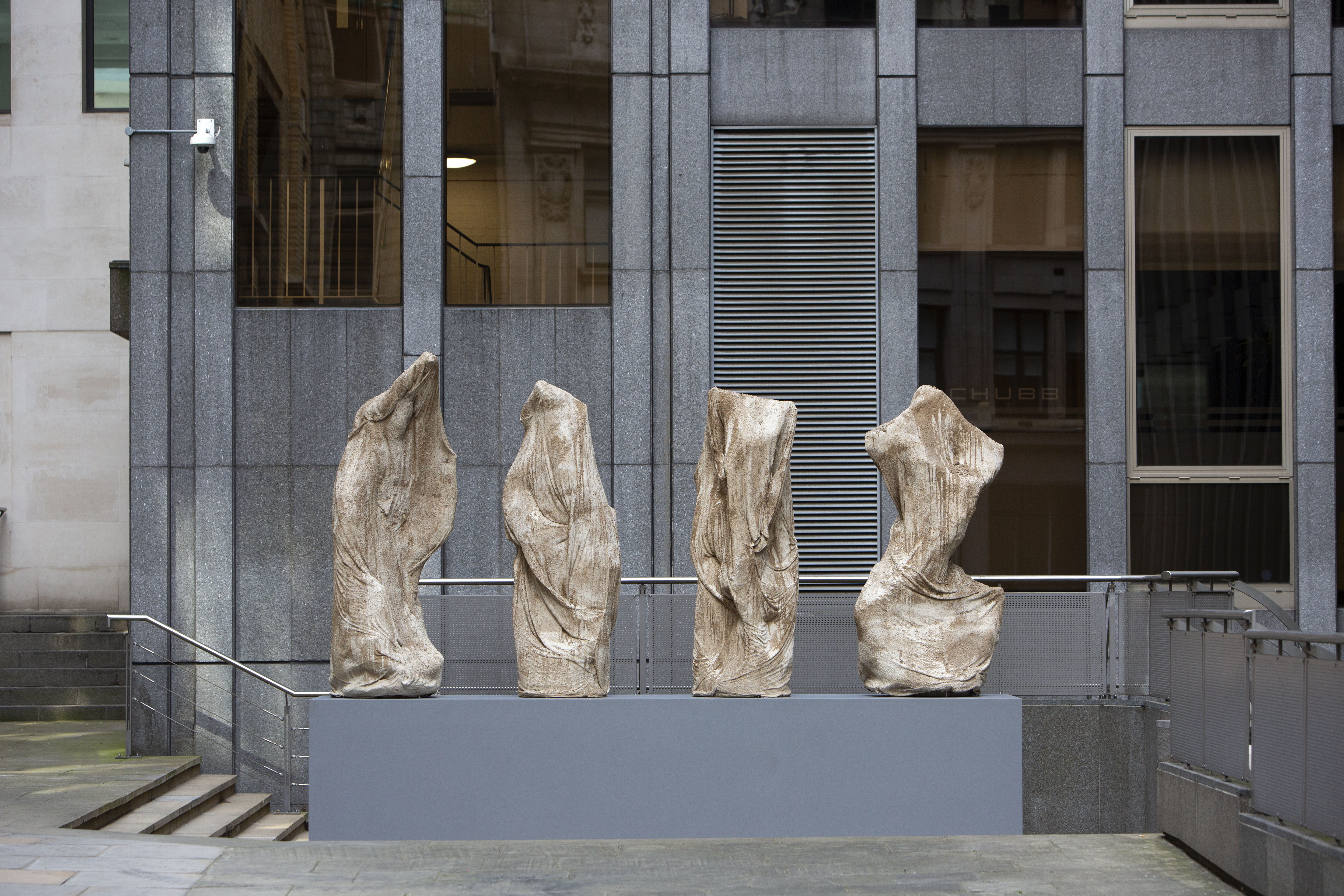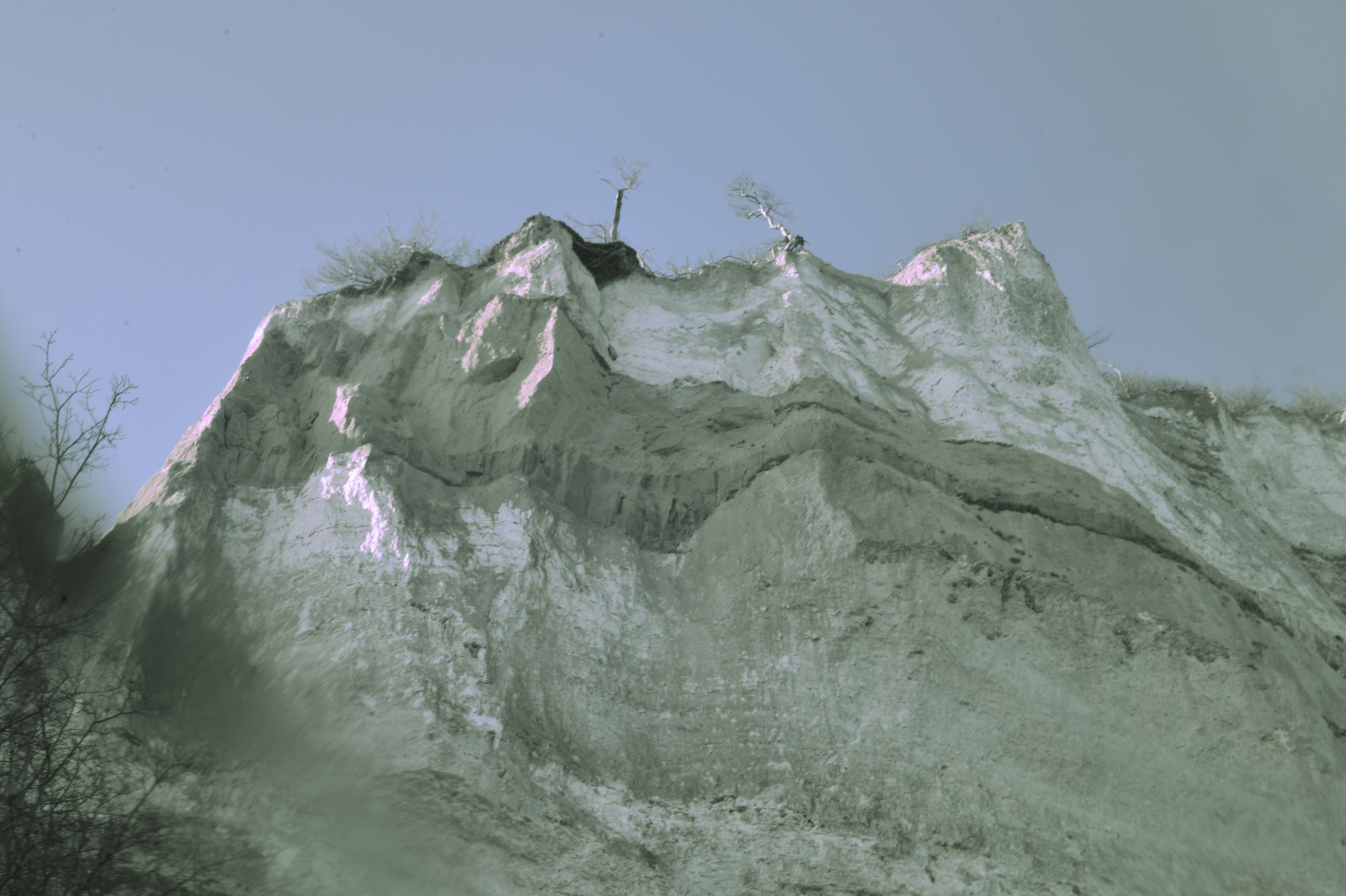Press & News
Sorø Art Museum bought one of my works for their permanent collection ❤️️
https://www.sn.dk/soroe-kommune/ny-kunst-skal-skabe-koensbalance-paa-kunstmuseet/
“AT SAMLE DET ADSKILTE”
interview about my practice in the new book made by 15. Juni Fonden to celebrate 10 years with their Honarary Graduation Prizes. I received the prize in 2018.
https://www.15junifonden.dk/wp-content/uploads/2023/11/15juni_10yeras_digital.pdf
Review of Sculpture in the City
“Sculpture in the City — lending new life to London” by Jackie Wullschläger, Finanical Times, 2021:
“Starting at the Gherkin, I slipped into a cul-de-sac just behind St Mary Axe and met a quartet of abstracted gravel and limestone figures, a fraction taller than life-size and arranged in slight gradations of height, from the classically graceful to the lumpen, bumpy, indented and hollowed out. This is “Reactivity” by young Danish sculptor Regitze Engelsborg Karlsen.
The gossamer delicacy with which she handles earthy matter, the twin suggestions of geological remnants and the spirals and coils of fabric clinging to the body as in ancient Greek drapery, the rhythmic flow between the figures — all would be exquisite anywhere, but in the shadow of the Gherkin the organic shapes and tactile appeal are tremendously affecting.
If the city’s skyscrapers are emblems of dynamism, ambition and global identity, “Reactivity” stills time, and asks us to reactivate more contemplative urban encounters. She finds, and wants to offer, “a great calm in communication and being with physical objects and materials”
Skabt til Klint Kalkbrud: Nu skal skulpturer udstilles i London”
https://www.sn.dk/odsherred-kommune/skabt-til-klint-kalkbrud-nu-skal-skulpturer-udstilles-i-london/SHIFT INTERVIEW, 2022:
Tell me about your background? How did you end up making art?
I always knew that I wanted to make art, but saying it out loud and choosing that way of living took some time and courage. Only after I had a bachelor’s in Pedagogy and Museology from the university, and where I was at the same time enrolled in an art talent program for three years, I was entirely sure that there was only one way for me, and that was life as an artist. I did not want only to read, only to write, being bound to a desk for the rest of my life, I did not want anybody else to tell me what I could do, how I should see and feel. I was not seeking any common truth about the world. I wanted to explore myself in the materials and with the materials. Physical meeting with objects, materials and sculptures has always made me feel much more than I have ever done from reading. I wanted to explore ways of commutating and what knowledge is.
I have always liked to explore, in materials and at sites. Growing up in the countryside, on a farm, I had enough space to wander alone, and make best friends with the forest, the trees, the birds and the deers – singing to them, playing with them. I have always questioned the things I have seen and the way things were done. It was never clear to me why animals were treated the way they were or why we did this in the fields. I feel very much like a witness to the enormous changes there have been in danish agriculture. From generation to generation I feel like we have moved further and further away from the soil, from the animal, from the knowledge and understanding that we are all connected. Our most important values that make us understand that we live on Earth.
Since art education stopped in school, I was lucky to have a space to learn art in my local environment. I had an amazing teacher, and together with all the other kids and young people, we created a special place for art. At the same time, the space where we were, was a well-known exhibition space for contemporary art. The possibility of being engaged with contemporary art has been very important for me.
How do you describe the features of your artwork?
I’m working with the landscapes of extraction. I am creating sculptures and stories from these places, where everything is constantly negotiated and constructed, a space between past and future; ecology, materiality, money, politics, nature, body, feminism and climate. I believe that we are in an urgent state where we have to reinvent and recreate our knowledge and relationship to our landscape, I believe we need to rediscover ourselves in the materials of the landscape through new stories. To be able to question the existing and be more present in the world. We need to think about what forms and reforms the world? And what kind of world do we want to live in?
I’m creating new spaces with my art, with materials such as sand, gravel and stone. With the landscape, the local and global.
In this digital daily life that we have all grown accustomed to, I think it is so essential for us to meet with materials and other bodies, in my case I use the body of the sculpture as my medium. Feeling present beyond the digital and the connection between my own skin and the sandy seabed. Sharing a breath with a bird. Being together in new ways. Art can make us meet, interact and become familiar, make connections.
What or who your inspiration is?
I’m deeply inspired by the ARTE POVERA movement and the use of materials and spaces in that movement. Other artists: Björk, Phyllida Barlow, Katharina Grosse, Helene Schmitz, Lynda Benglis, Magdalena Abakanowicz, Maya Lin and Otobong Nkanga are my personal heroines.

18 SPØRGSMÅL TIL REGITZE ENGELSBORG KARLSEN, I DO ART, 2022:
9) Hvad er dine go-to materialer og redskaber?
Jeg har altid sten, sand og grus stående. Og så har jeg diverse træ-stumper, plader og sådan noget. Jeg samler tit sten, skaller og ja alt muligt, som jeg tager med ud på mit atelier. For nyligt håndsorterede jeg jorden i mine højbede. De rødder jeg fandt, har jeg taget med på atelieret, og de kan nu bruges som materiale. Jeg kan godt lide at samle materialer sammen.
15) Hvad undrer dig mest for tiden?
Jeg er ret bekymret for den måde, vi tænker “natur” på, specifikt i forhold til de store problemer og konflikter, der er omkring natur-nationalparker og “re-wilding”, og hvor svært det åbenbart er for os som samfund at give “naturen” plads. Det virker som om, at vi kun er i stand til at give det velkendte plads. Det ukendte, det som vi ikke har nogle billeder af – ingen erindringer om – ved vi simpelthen ikke, hvordan vi skal begribe, og det er jo et kæmpe problem i forhold til fx klimaforandringer, biodiversitetskrisen og vores fremtid som er usikker og uvis. Her bliver samtidskunsten meget vigtig!
-https://www.idoart.dk/blog/18-spoergsmaal-til-regitze-engelsborg-karlsen?rq=regitze%20engelsborg%20karlsen